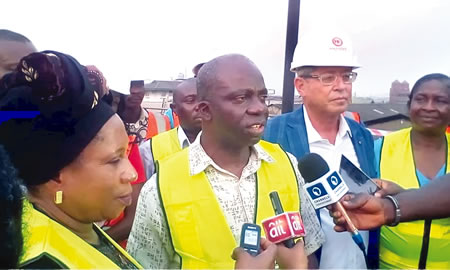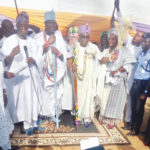What could have been a monumental disaster in Lagos was averted- courtesy of the quick deployment of advanced technological skills in the renovation of the Ijora Seven-Up Bridge.
The 34-year old infrastructure that had suffered neglect in the past would have suddenly collapsed, but for the intervention of the Federal Ministry of Power, Works and Housing, which, as part of reconstruction works on some critical roads in Lagos, employed the services of a contractor for the renovation exercise.
Speaking on the issue last week, the Chief Executive Officer, Hallekem Limited, Messrs Haim Halle, whose firm executed the project, noted that the condition of the 325 metres section of the bridge was ‘appalling.
According to Halle, when the expansion joints were opened, it was discovered that they were all rusty and full of water deposit, dating back to several years.
“The condition we met the infrastructure was so bad. It was as a result of lack of drainage on the bridge to evacuate rain water. “Besides, the rubbers in the joints were all worn out. This was the cause of heavy vibration, being felt by the motorists, giving them the feelings that the bridge would collapse,” Halle said.
He also explained that the mostly affected section of the bridge had to be lifted up instead of completely removing same for repairs, adding that the joints were fitted with Italy made rubber by Alga.
Also, the contractor hinted that there was the need to construct drainage pipes into the bridge to ensure there is no water deposit anywhere on the section repaired.
“We used a four-inch-pipe for the drainage, include the construction of the edges, specially because of the effect of heavy duty trucks on asphalt. What we did was to reinforce the edges with 50 grade concrete whereas the bridge itself has 30 grade concrete, in addition, ‘bituminous felt’ was introduced as reinforcement around the drainage to prevent water from logging on the bridge’s drainage path,” he said, adding that with what has been done now, it has further extended the life span of the bridge by another 35 to 40 years.
Declaring the bridge open to traffic last week, the Federal Controller of Works , Federal Ministry of Power, Works, and housing, Engineer Adedamola kuti, also corroborated the fact that all the expansion joints on the bridge were bad and that some other deteriorated portions made the bridge unsafe; hence, its closure for repairs.
“This is about the third bridge in Lagos that we have completed maintenance work on. Earlier, we completed that of Marine Beach. We completed Coconut Bridge and now, this is the third one, Ijora 7Up Bridge. Hopefully, in a couple of months, we should be completing the Leventis Bridge,” Kuti said.
There was also the inspection of the milling and resurfacing of the failed portions of the Third Mainland Bridge. The exercise, according to Kuti, is part of a maintenance plan to keep the over 25 year old bridge in top condition.
“Anytime from January 2019, renovation work will begin on the underwater repair of the piles, while the expansion joint repairs will also commence in the early part of next year. The milling and resurfacing work, which was not part of the original contract for the renovation of the bridge is to ensure safe driving on the bridge”, Kuti said.
He listed other roads that were repaired to include Agege Motor Road, Herbert Macaulay Way, Alagomeji Road, among others, stating that President Muhammadu Buhari-led government is very responsive and is trying its best under the leadership of the Minister of Power, Works and Housing, Mr Babatunde Fashola, who has provided leadership in fixing all these bridges in Lagos,” he said.






